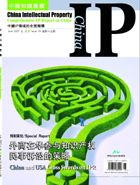
The SAM Round Table, sponsored by the Business Software Alliance ("BSA") and China Software Union ("CSU"), opened in Beijing on June 27, 2007. CIOs and IT managers from over 50 large and medium-sized manufacturing enterprises attended the meeting. Representatives from BSA and CSU and consultants from Ernst & Young introduced how to implement the software asset management (SAM) to participants, and through case studies, discussed how SAM could benefit a company with company representatives.
As IT technology has continued to develop and been widely applied in business, the IT system has played a bigger role in companies. As an important part of the IT assets of a company, software has seen its percentage increasing in the total cost of the IT system. More and more companies have begun to understand that while managing and maintaining a tangible IT asset, such as servers and memorizers, they must strengthen the management and control over software. They desire to find a suitable way for software asset management. Under the demand, BSA and CSU jointly held a round table which received much support and participation from the companies.
Software Asset Management or "SAM" refers to a set of infrastructures and processes which effectively manage, control and protect the software asset within an organization, across the software life cycle including purchase, deployment, migration, updating, upgrading, maintenance, waste and removal. SAM effectively helps a company to gain overall control over the software asset and manage it within the entire production life cycle, so as to effectively improve cost control, risk prevention, productivity and competency. By implementing SAM, a company will attain the following benefits:
Reduce unnecessary investments and effectively lower costs. By integrating its software asset, a company knows clearly the purchase, use and distribution of software within the organization, which helps reduce repeated purchases and ensure volume discounts for centralized large-volume purchases. In addition, for software which is no longer in use, the company may stop purchasing follow-up services and minimize repeated investments.
Prevents legal, financial and IT risks. Financially SAM helps avoid the risk of confusion among assets due to business expansion; legally SAM helps avoid unnecessary proceedings or contract violations resulted from use of unlicensed software and ensures the legitimate use of software; in IT management, SAM helps prevent waste from excessive software purchases and ensures a quick response to any software problem, and guarantees normal business operation by effectively guarding against potential risks in the IT system.
Enhance information security. Considering the many existing security risks in the information environment, SAM helps minimize nonstandard use of software, such as, free downloading, installation and sharing of software. It also enables a company to timely upgrade software or installs patches. Therefore, it increases the IT transparency in an organization and effectively prevents any risk to information security.
"SAM has been one of the major projects that BSA promotes in China and other countries for many years. As this year is essential to the comprehensive implementation of the Eleventh Five Year Plan, China has released policies to encourage faster and better IT growth. IT construction in Chinese enterprises will enter a new stage of fast development. We hope that through round tables or similar forums, we can help more companies to understand and implement SAM, to enhance their overall management and control of IT assets, as well as their competency," said Zhang Quansheng, Chief Officer of BAS China.
It is reported that after the Beijing round table, Shanghai, Nanjing, Guangzhou and Chengdu will continue to hold SAM round tables which local companies will have opportunities to participate.
(Translated by Ren Qingtao)
|
Copyright © 2003-2018 China Intellectual Property Magazine,All rights Reserved . www.chinaipmagazine.com 京ICP备09051062号 |
|
|



